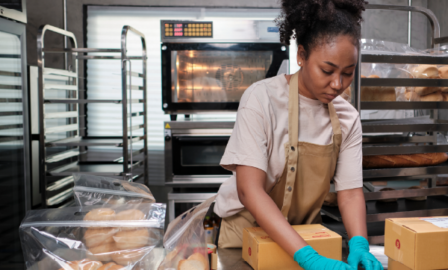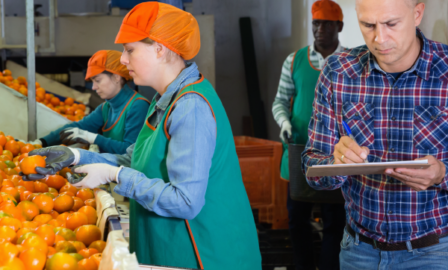How Issues with Food Access Have Created Innovation
With the onset of COVID-19, predictions about the interruption of supply chain and food shortages were immediate and widespread. As many businesses begin to reopen, many are still concerned about a potential second wave. Ingredient sourcing concerns due to shortages means that many consumers and companies have developed creative ways to cope with these new restrictions.
Supply Chain Reevaluation
With many world economies experiencing some sort of recession, companies looking to ramp up their production are finding new and backup ingredient suppliers. Rekindling and increasing their connections to create a wider network of options is one way that companies have attempted to combat shortages. Another is to change their product manufacturing altogether.
Because of COVID-19, the demand for some consumer products and foods surged, becoming deemed as “necessary”. These products quickly became the priority for many companies, while other products were pushed aside. As COVID-19 stabilizes and consumers adapt their buying habits once again, the surge for these “necessary” products should equalize, allowing more room for “secondary” products to reappear at a greater quantity.
Because companies are reaching out to a more diverse group of suppliers, a diversification in the food and supply chain is creating a wider variety of products. This diversification is leading to an innovation of new products that ultimately, will offer consumers a wider variety from which to choose.
Impacts on Food Access
Because of the decrease in the availability of various ingredients and products, food deserts have been exacerbated. Places that already had trouble accessing a variety of ingredients are experiencing increased difficulty, simply because of a decrease in manufacturing and shipping capabilities, and a decrease in ingredient access.
For areas that already experience limited access to grocery stores and other food sources, COVID-19 has only increased that difficulty. Stores that receive minimal shipments for rural and poverty prone locations often sell-out quickly leaving a significant population without resources.
In addition to increased food shortages, consumers living in food deserts and poverty-prone areas are less likely to have financial funds and travel resources, to move an extended distance to have access to food and other essential items.
Although food shortages due to COVID-19 are forcing many brands and consumers to innovate, there are also consequences and issues caused by limited supply chains. Diversifying consumer habits and company suppliers will help to bring new products to the market. However, with decreased access to cheaper options provided by larger brands, many consumers will not have the option to explore alternatives, leading to increased poverty.
Food Access Innovations
Due to food and ingredient shortages caused by COVID-19, many consumers are looking for innovative ways to cut down on food waste. A renewed understanding of the importance of food waste has caused many companies and consumers to search for ways to minimize their food waste, and that includes upcycling food.
The purpose of upcycling food, is to help cut down on food waste, and recently, the Upcycled Food Association has determined a single definition for what upcycled food is: “Upcycled foods use ingredients that otherwise would not have gone to human consumption, are procured and produced using verifiable supply chains, and have a positive impact on the environment.”
Not only is there widespread interest in upcycling non-renewable food products, there has been focus on the highest waste food product: bread. With more than 12.5 tons ending up in landfills as food waste every year, many companies and organizations have recognized the issues with food waste, especially bread waste.
The USDA Agricultural Research Center has discovered a way to turn bread waste into vitamin C. The food waste industry is massive, and with growing concern over finding alternatives to traditional bread waste, upcycling food products represents one way that food waste can be minimized amongst food and ingredient shortages.
Turning to Local
The upcycled food movement, although relatively new, has seen greater strides since the onset of COVID-19, as awareness grows about the fragility of world supply chains. Consumers who are concerned about food shortages and are looking to continue having access to the widest range of ingredients, are turning to local sources at an increasing rate.
There has been a widespread shift towards greater utilization of local options, especially in the case of meat producers and suppliers. It is not surprising that brands who are transparent and authentic about the source of their product, are the ones finding success during COVID-19 and these brands tend to be local producers.
Consumers are facing potentially problematic meat shortages as many companies who work globally are being turned away due to fear of COVID-19 infection. Local companies who are transparent about where they source their ingredients are finding that sales are surging.
Protein alternatives are also surging, such as niche protein products like lamb and fish, and meatless meat products. Although these industries are seeing an increase in consumers, there is often a higher cost to consumers for these products, and not everyone will be able to afford the shift in protein sources.
As COVID-19 forces companies to seek out back-up and alternate suppliers, diversification in the products available can also increase the resiliency of the supply chain. For consumers, many who lack consistent access to a variety of ingredients may find that food deserts are expanded or increased.
Seeking out multiple resources for ingredients can be an effective way to combat these shortages. Now more than ever, companies must explore alternative and resilient supply chain options or potentially pivot their offerings or services to stay competitive and successful.
Subscribe to Clarkston's Insights
Contributions by Courtney Loughran.



